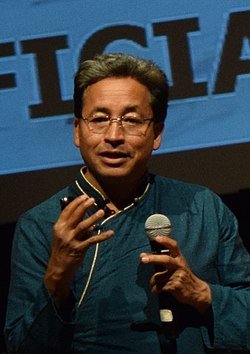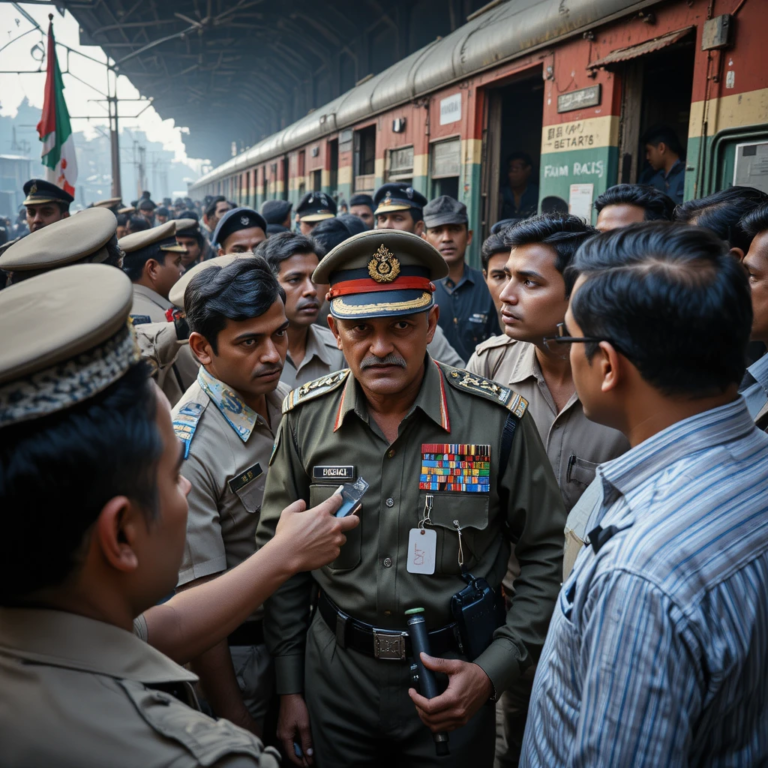In the tapestry of modern Indian cities, Chandigarh holds a unique and revered place. It is not merely an urban center; it is a bold experiment in planning, architecture, and social design—a city that was meticulously planned from scratch to embody the hopes and aspirations of a newly independent nation. This blog delves into the rich story of Chandigarh: its inception, the critical need behind its creation, and the visionary planning that transformed a blank slate into one of the most celebrated planned cities in the world.
Table of Contents
- Historical Backdrop: The Birth of a New Nation
- The Need for a New Capital
- The Visionaries Behind Chandigarh
- The International Design Competition
- Le Corbusier’s Grand Master Plan
- Urban Design and Planning Principles
- Architectural Innovations and Key Structures
- Challenges in Planning and Implementation
- Social and Cultural Impact
- Sustainable Design: Green Spaces and Modern Urban Living
- Chandigarh Today: A Living Legacy
- Lessons in Urban Planning
- Conclusion: The Enduring Spirit of Chandigarh

Historical Backdrop: The Birth of a New Nation
The story of Chandigarh cannot be told without first understanding the context of post-independence India. The country, having emerged from the shackles of colonial rule in 1947, faced the daunting challenge of not only redefining its national identity but also rebuilding a society fragmented by partition. The division of British India into India and Pakistan led to immense displacement, violence, and the need to restructure administrative centers that had been integral to the colonial administration.
In this era of profound change, the Indian government sought to build a new future that broke with the past. The nation was eager to showcase its newfound independence through ambitious projects that embodied modernity, progress, and unity. It was in this milieu that the idea of Chandigarh was born—a city that would serve as a symbol of progress, rationality, and a forward-thinking approach to urban living.

The Need for a New Capital
The Administrative Void
Prior to the partition of India, the city of Lahore had been a pivotal administrative center for the Punjab region. However, after the partition, Lahore became a part of Pakistan, leaving a significant administrative void on the Indian side. Punjab, a state with a rich historical and cultural legacy, suddenly found itself in dire need of a new capital that could serve as a center for governance, culture, and commerce.
The need for a new capital was not merely administrative. It was deeply symbolic—a representation of India’s commitment to a future built on modern values and the principles of democratic governance. The establishment of a new capital in Punjab was a critical step towards reasserting the identity and autonomy of the state in the wake of the partition’s traumatic legacy.

A Break from the Colonial Past
The planners of Chandigarh were determined to create a city that would represent a stark break from the legacy of colonial rule. Unlike many cities in India that had evolved organically over centuries, often burdened with the constraints of historical infrastructure and planning, Chandigarh was to be built from scratch. This offered a unique opportunity: a blank canvas on which to project a vision of modernity, order, and progress.
The goal was to design a city that was not just functional but also inspirational—a space that could reflect the spirit of a nation in transition. The planners envisioned Chandigarh as a city where administrative efficiency, aesthetic beauty, and the well-being of its residents could coexist harmoniously.
The Visionaries Behind Chandigarh
The Role of Visionary Leadership
At the heart of Chandigarh’s planning was the belief that urban design could be a powerful tool in nation-building. The planners and architects tasked with this enormous responsibility were not just professionals—they were visionaries who believed in the transformative power of design. Their challenge was to create a city that could encapsulate the ideals of modernity, rationality, and progress while remaining deeply connected to the cultural fabric of India.
Key Figures in Chandigarh’s Planning
Among the many influential figures, a few names stand out for their pivotal roles:
- Le Corbusier: The Swiss-French architect whose modernist vision became synonymous with Chandigarh. His approach to urban planning and design brought a new architectural lexicon to the Indian context.
- Pierre Jeanneret: A close associate of Le Corbusier, Jeanneret played a crucial role in translating the master plan into actionable blueprints and overseeing the implementation on the ground.
- The Government of India: The state’s leadership, particularly the then-Prime Minister Jawaharlal Nehru, was deeply involved in the project. Nehru’s progressive outlook and commitment to building a modern India were instrumental in shaping Chandigarh’s destiny.

The International Design Competition
A Global Call for Innovation
Understanding the magnitude of the task, the Indian government launched an international design competition. The objective was clear: to create a city that was not only functional but also reflective of the forward-thinking aspirations of a new nation. The competition attracted submissions from architects and urban planners around the globe, each proposing a unique vision for Chandigarh.
The Selection Process
The selection process was rigorous. Submissions were evaluated based on criteria such as functionality, aesthetic appeal, integration with nature, and the ability to foster a sense of community. After careful deliberation, the design proposed by Le Corbusier and his team emerged as the clear winner. Their proposal resonated with the modernist ideals of the time and promised to create a city that was both innovative and sustainable.

Why Le Corbusier’s Vision Stood Out
Le Corbusier’s design was groundbreaking for several reasons:
- Modernist Approach: His design principles were rooted in modernism, emphasizing clean lines, open spaces, and functional urban zones.
- Rational Layout: The master plan was designed to minimize chaos and maximize efficiency—a significant departure from the organic growth of traditional cities.
- Integration of Nature: Le Corbusier’s plan placed a strong emphasis on green spaces and open areas, ensuring that nature played an integral role in the city’s layout.
- Cultural Sensitivity: While the design was modern and international in its appeal, it also took into account the cultural and climatic conditions of the region, ensuring that the city was both beautiful and functional.
Le Corbusier’s Grand Master Plan
A City Divided into Sectors
One of the most revolutionary aspects of Le Corbusier’s plan was the division of Chandigarh into self-contained sectors. Each sector was designed as a microcosm of the city, complete with its own amenities such as schools, markets, parks, and health facilities. This modular approach ensured that residents could enjoy a high quality of life without the need to travel long distances for everyday needs.
- Self-Sufficiency: The sector-based planning was intended to foster community living, where each sector functioned as an independent unit while remaining connected to the larger city network.
- Logical Organization: The sectors were laid out in a grid pattern, facilitating easy navigation and reducing congestion. This structure allowed for systematic expansion and efficient management of urban services.

The Capitol Complex: The Heart of Chandigarh
At the core of Chandigarh lies the Capitol Complex, an ensemble of monumental buildings that serve as the administrative and cultural heart of the city. This complex includes:
- The Legislative Assembly: A building that symbolizes democratic governance and the administrative prowess of the state.
- The High Court: An architectural marvel that blends functionality with aesthetic grandeur.
- The Secretariat: The nerve center for the administrative machinery of Punjab, designed with both efficiency and elegance in mind.
These buildings were not only functional; they were also intended to inspire awe and reflect the values of transparency, progress, and justice. Their imposing structures, set against meticulously landscaped gardens, created a visual narrative of power, order, and modernity.
Embracing Open Spaces and Greenery
Le Corbusier’s design philosophy recognized the intrinsic value of nature in urban settings. Chandigarh was planned with extensive green belts, parks, and tree-lined boulevards that provided residents with ample opportunities for leisure, recreation, and relaxation. This integration of nature served multiple purposes:
- Environmental Benefits: The green spaces helped mitigate the urban heat island effect and improved air quality.
- Social Spaces: Parks and open areas became community hubs where people could interact, fostering a sense of belonging and communal harmony.
- Aesthetic Appeal: The natural landscapes enhanced the overall beauty of the city, making it a pleasant environment to live in and visit.
Urban Design and Planning Principles
Functionality Meets Aesthetics
The planning of Chandigarh was a marriage of functionality and aesthetics. The city was designed to be highly efficient, ensuring that administrative, commercial, and residential areas were optimally organized. At the same time, every element of the city was infused with a sense of beauty and elegance, from the architectural forms of the public buildings to the layout of the parks and public spaces.

The Grid System and Sector Planning
The use of a grid system was revolutionary in its simplicity and effectiveness. This systematic approach allowed planners to:
- Reduce Traffic Congestion: By organizing the city into a series of well-defined sectors and arterial roads, Chandigarh minimized traffic congestion and made commuting more efficient.
- Facilitate Future Expansion: The grid system provided a clear blueprint for future growth, ensuring that new developments could be seamlessly integrated into the existing urban framework.
- Promote Accessibility: The sector-based layout ensured that essential services were within easy reach of every resident, enhancing the overall quality of urban life.
A Modernist Aesthetic
Chandigarh’s architectural style is synonymous with modernism. The use of geometric shapes, the interplay of light and shadow, and the bold use of concrete all contribute to a visual language that is both stark and elegant. This modernist approach was not just about aesthetics—it was a reflection of the optimism and forward-thinking mindset of post-independence India.
- Simplicity and Function: The buildings and public spaces in Chandigarh are characterized by their simplicity, a testament to the belief that form should follow function.
- Innovation in Design: The innovative use of materials and structural techniques broke away from traditional construction methods, setting new benchmarks in architectural design.
Architectural Innovations and Key Structures
The Capitol Complex Revisited
The Capitol Complex remains one of Chandigarh’s crowning achievements. It is a testament to the vision of its creators and a symbol of modern democratic governance. Each building within the complex was designed to serve a specific administrative function while contributing to an overarching aesthetic narrative.
- Legislative Assembly: Its spacious auditoriums, clean lines, and open courtyards speak of transparency and accessibility.
- High Court: The design of the court building is both imposing and graceful, reflecting the gravity of the judicial system while ensuring a welcoming environment.
- Secretariat: A blend of functionality and artistry, the Secretariat houses various administrative offices in a structure that prioritizes efficiency without sacrificing beauty.
Residential Areas: The Life of the City
Beyond the monumental government buildings, Chandigarh’s residential sectors are a marvel of urban design. Each sector is self-sufficient, featuring well-planned residential blocks, local markets, schools, and community centers. This thoughtful planning has had several benefits:
- Community Building: The proximity of essential services fosters a sense of community among residents, encouraging social interaction and collective responsibility.
- Balanced Living: The mix of residential, commercial, and recreational spaces ensures that residents have access to all the amenities needed for a balanced and fulfilling lifestyle.
- Scalability: The clear delineation of sectors has allowed the city to expand in a structured manner, accommodating population growth without compromising on the quality of urban life.

The Role of Public Art and Monuments
Chandigarh is not just about buildings and roads—it is a canvas for public art and cultural expression. The cityscape is dotted with sculptures, fountains, and memorials that pay homage to the historical and cultural narratives of the region. These elements add layers of meaning to the urban environment and invite residents and visitors alike to engage with the city’s cultural heritage.
Challenges in Planning and Implementation
Logistical and Technical Hurdles
Building a city from scratch, especially in the early years of India’s independence, was a colossal challenge. The planners and engineers faced a myriad of logistical and technical hurdles:
- Resource Constraints: Limited financial resources and the need to balance cost with quality meant that every decision had to be carefully calibrated.
- Technological Limitations: The technology and construction techniques available at the time posed challenges, requiring innovative solutions to achieve the ambitious design goals.
- Coordination Across Teams: Bringing together international architects, local engineers, and government officials required seamless coordination—a challenge in any large-scale project.
Social and Political Challenges
Chandigarh’s planning was not without its share of political and social challenges:
- Balancing Ideals and Practicality: The lofty ideals of modernity and progress had to be reconciled with the practicalities of building a functional city. This often meant making compromises without diluting the overall vision.
- Public Acceptance: For many residents, the radical departure from traditional urban forms was initially unsettling. However, over time, the clarity and functionality of the design won widespread acceptance.
- Changing Demographics: As the city grew, the planners had to continuously adapt to changing demographics and evolving needs, ensuring that Chandigarh remained a vibrant and responsive urban center.

Environmental Considerations
Even in its planning phase, Chandigarh’s design took into account the environmental impact of urban development:
- Sustainable Resource Use: The planners emphasized the efficient use of resources, from water management to the careful selection of building materials.
- Integration with Nature: By incorporating extensive green spaces, the design sought to create a harmonious balance between the built environment and natural ecosystems, a principle that remains relevant in today’s discussions on sustainable urban development.
Social and Cultural Impact
A City as a Cultural Beacon
Chandigarh was never intended to be just an administrative hub. It was envisioned as a city that would reflect the cultural aspirations of a modern India. From its public art installations to its community centers and cultural institutions, Chandigarh has always strived to be a melting pot of ideas and creativity.
- Cultural Institutions: Over the years, Chandigarh has become home to several museums, galleries, and theaters that celebrate both local and national heritage. These institutions not only preserve history but also promote contemporary art and culture.
- Community Engagement: The design of the city fosters community engagement. Open spaces, plazas, and parks serve as venues for cultural events, public gatherings, and social interactions, strengthening the bonds between residents.

The Impact on Urban Lifestyle
Chandigarh’s planning has had a profound impact on the urban lifestyle of its residents:
- Quality of Life: The balanced integration of residential, commercial, and recreational spaces has contributed to a high quality of life. Residents enjoy a clean, well-organized environment with ready access to essential services.
- Urban Harmony: The clear layout and sector division have minimized urban chaos, creating a sense of order and harmony that is often missing in organically grown cities.
- Innovation in Living: The city has become a model for innovative urban living, inspiring other cities in India and around the world to adopt similar planning principles.
Sustainable Design: Green Spaces and Modern Urban Living
Environmental Stewardship in Urban Planning
Chandigarh was conceived with an eye towards environmental sustainability, a concept that was ahead of its time. The planners recognized that a healthy urban environment is inextricably linked to the well-being of its inhabitants.
- Green Corridors: The layout of the city includes numerous green corridors that not only enhance the aesthetic appeal but also serve as ecological buffers, reducing pollution and promoting biodiversity.
- Water Management: Efficient water management systems were incorporated into the city’s design. The planning ensured that natural water bodies were preserved and integrated into the urban fabric, contributing to the overall sustainability of the region.
- Energy Efficiency: While the construction techniques of the time were limited compared to today’s standards, the design principles of Chandigarh emphasized natural ventilation and light, reducing the need for artificial climate control and contributing to energy efficiency.

Urban Renewal and Future Sustainability
As global awareness of climate change and environmental degradation has grown, Chandigarh’s planning principles have become increasingly relevant:
- Adapting to Change: The city’s flexible design has allowed it to adapt to modern sustainability challenges, including the incorporation of renewable energy sources and modern waste management systems.
- Model for Future Cities: Chandigarh is often cited as a model for sustainable urban planning. Its emphasis on green spaces, efficient public transportation, and community-centric design offers valuable lessons for future city developments worldwide.
Chandigarh Today: A Living Legacy
Evolution of a Modern City
More than half a century after its inception, Chandigarh continues to evolve while staying true to its original vision. The city’s transformation from a conceptual blueprint to a vibrant, thriving metropolis is a testament to the enduring power of thoughtful urban planning.
- Economic Growth: Today, Chandigarh is a hub of economic activity, with thriving sectors in education, technology, healthcare, and commerce. The city’s well-organized layout has attracted businesses and professionals, fueling economic growth while maintaining a high standard of living.
- Cultural Dynamism: With a rich tapestry of cultural events, festivals, and public art, Chandigarh remains a vibrant center of creativity and innovation. Its cultural institutions and public spaces continue to serve as gathering places that bring the community together.
- Global Recognition: Chandigarh’s design and planning have earned it global acclaim. Urban planners and architects from around the world study its layout as a pioneering example of modernist urban design, reaffirming its place as a city ahead of its time.

Challenges and Resilience
No urban planning project is without its challenges, and Chandigarh has faced its share over the decades:
- Population Growth: Rapid urbanization and population growth have tested the city’s infrastructure. However, the original design’s emphasis on scalability has allowed Chandigarh to adapt to these changes more smoothly than many other cities.
- Modern Demands: The demands of modern life—such as increased traffic, digital connectivity, and evolving social dynamics—have required continuous updates and improvements in urban management. City planners and local authorities have had to innovate constantly to ensure that Chandigarh remains a functional and vibrant metropolis.
- Preserving Heritage: Amid rapid modernization, preserving the architectural and cultural heritage of Chandigarh has been a priority. Efforts to maintain and restore key landmarks ensure that the city’s historical identity is not lost in the wave of progress.
Lessons in Urban Planning
The Chandigarh Model
Chandigarh offers invaluable lessons for urban planners and policymakers around the world:
- Integrated Planning: The city exemplifies how integrating residential, commercial, administrative, and recreational spaces can create a balanced and sustainable urban environment.
- Community-Centric Design: The emphasis on self-contained sectors and ample public spaces fosters community spirit and social cohesion, proving that well-designed urban spaces can enhance quality of life.
- Adaptability: Chandigarh’s flexible design has allowed it to adapt to changing circumstances over the decades. Its ability to evolve with technological advancements and demographic shifts serves as a model for future urban developments.
- Environmental Harmony: The successful integration of green spaces and natural elements into the urban fabric highlights the importance of environmental stewardship in city planning.

Global Implications
The principles that guided Chandigarh’s planning have resonated far beyond the borders of India. Urban planners around the world have looked to Chandigarh as a source of inspiration:
- Modernist Urbanism: Chandigarh’s modernist architecture and grid-based planning have influenced urban development strategies globally, especially in regions grappling with rapid urbanization.
- Sustainable City Models: In an era where sustainability is paramount, Chandigarh’s focus on green spaces and efficient resource use offers a blueprint for building cities that are both livable and environmentally responsible.
- Holistic Urban Solutions: The success of Chandigarh reinforces the idea that urban challenges require holistic solutions that address not just economic or administrative needs, but also the social, cultural, and environmental dimensions of urban life.
The Enduring Spirit of Chandigarh
A Beacon of Modernity
Chandigarh stands as a living monument to the transformative power of visionary planning and design. It is a city that was conceived at a time of great national transformation and has since evolved into a symbol of modernity, progress, and resilience.
- Inspiration for Future Generations: For architects, urban planners, and policymakers, Chandigarh is a source of inspiration. It reminds us that with thoughtful design and a commitment to community, it is possible to create urban environments that are both beautiful and functional.
- A Testament to Idealism: Despite the challenges that come with rapid urbanization and modern pressures, Chandigarh remains a testament to the enduring idealism of its founders. Its design reflects a belief in the power of order, beauty, and efficient planning to improve the human condition.
- Cultural Harmony: The city’s vibrant cultural scene, supported by its well-planned public spaces and institutions, continues to nurture a sense of community and shared identity among its residents.
Looking Ahead: The Future of Chandigarh
As Chandigarh moves forward into the future, it faces new challenges and opportunities:
- Embracing Technology: The integration of smart technologies into urban infrastructure promises to further enhance the efficiency and livability of the city. From smart traffic management systems to digital public services, Chandigarh is poised to blend its rich legacy with cutting-edge innovations.
- Expanding Sustainability Initiatives: With growing awareness of environmental issues, Chandigarh’s planners are continuously seeking ways to further green the city. Initiatives focused on renewable energy, waste management, and water conservation are being integrated into the fabric of the urban landscape.
- Enhancing Community Participation: The future of Chandigarh will also be shaped by the active participation of its residents. Community-driven projects, participatory urban planning, and public-private partnerships are expected to play a crucial role in shaping the city’s evolution.
Conclusion: The Enduring Spirit of Chandigarh
Chandigarh is more than just a planned city; it is a bold statement about what urban planning can achieve. Born out of the need to forge a new identity for a nascent nation, Chandigarh was envisioned as a beacon of modernity, a city that balanced functionality with beauty, and order with creativity. The vision of Le Corbusier and his collaborators has endured for decades, transforming Chandigarh into a living, evolving testament to the power of thoughtful design.
From its inception as an administrative necessity to its current status as a globally recognized model of modern urban planning, Chandigarh has continuously inspired and challenged conventional ideas about how cities should be built and experienced. Its meticulously planned sectors, monumental public buildings, extensive green spaces, and innovative infrastructure have set a benchmark that continues to guide urban planners around the world.
As we reflect on Chandigarh’s journey, we are reminded that cities are not merely collections of buildings and roads—they are living entities that embody the hopes, dreams, and values of the societies that create them. Chandigarh, with its harmonious blend of art, architecture, and nature, stands as a testament to the idea that when urban planning is executed with vision and purpose, it can transform the very fabric of human life.
In an era marked by rapid urbanization and environmental challenges, Chandigarh’s legacy offers timeless lessons. It reminds us that the future of cities lies in designs that prioritize sustainability, community, and the well-being of all citizens. As Chandigarh continues to evolve, it remains a symbol of resilience and a beacon for future generations—a city where every street, sector, and public space tells the story of a bold dream turned into enduring reality.
Whether you are an urban planning enthusiast, an architect, or simply someone who appreciates the beauty of well-thought-out spaces, the story of Chandigarh is a compelling narrative of hope, innovation, and the transformative power of design. It stands as a reminder that with visionary leadership and a commitment to excellence, it is possible to shape environments that not only meet the practical needs of today but also inspire the possibilities of tomorrow.

Chandigarh’s journey from a concept on paper to a thriving metropolis is a lesson in ambition, resilience, and the relentless pursuit of progress—a story that continues to unfold as the city embraces the challenges and opportunities of the future, always guided by the enduring principles of modernity, sustainability, and community spirit.



